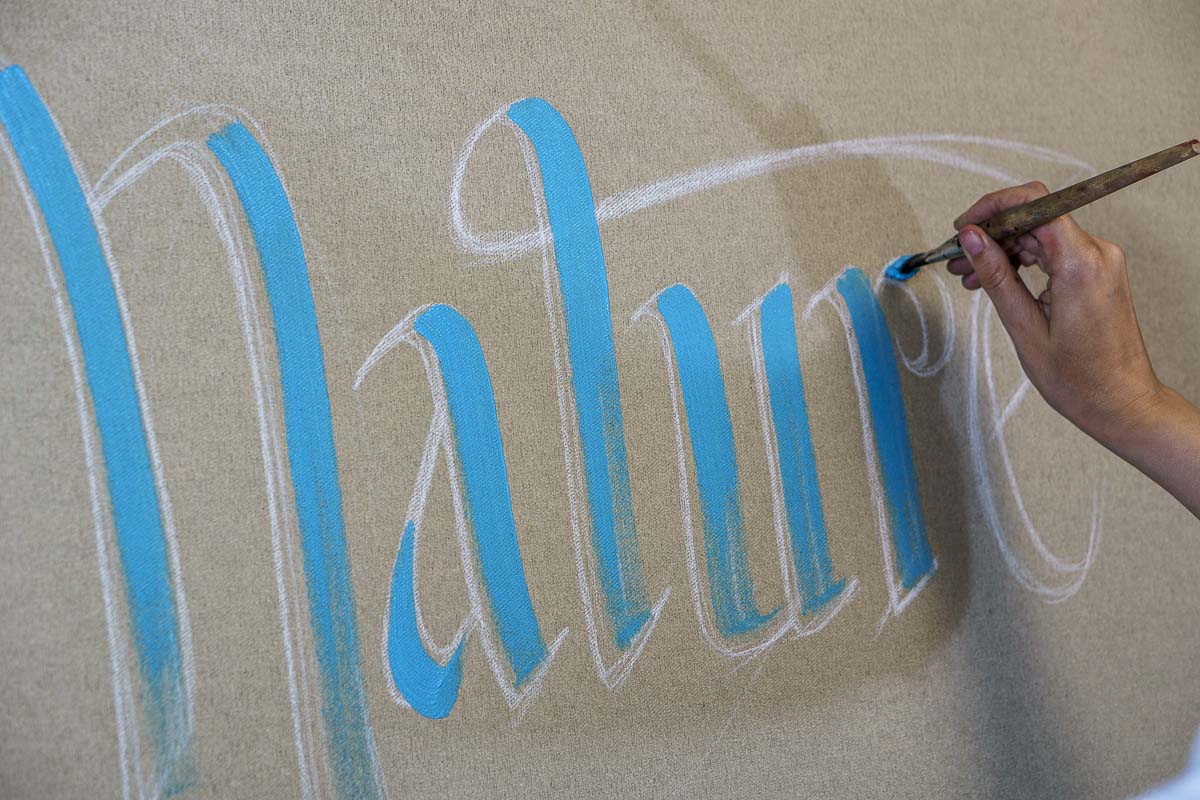The Classic canvases are eraser-proof. Under the following conditions, you can remove sketches without leaving any residue.
Mixed Media on Canvas
What is Mixed Media?
The term mixed media in art stands for the processing of different materials in the creation of a work. Here, colors with collages, stickers with adhesive work, metal and plastic, canvas and paper can be some examples of the combination of different media. There are almost no limits to the imagination.
The important thing here is that the substrate can support the materials. Working base here can be wood, cardboard, paper or canvases.
Likewise, the bonds of the various media must hold well. Examples of connecting elements are called glue, screws, yarn or epoxy resin.
Mixed Media on canvas
Canvases are also ideal for mixed media work. Depending on the materials used or the effect achieved, the right canvas must be selected.
Here you should ask yourself the following questions:
- How heavy will the materials used be?
- What can be used to attach the media?
- Does a special substructure have to be built for mounting?
- With which paint should the work be colored?
This results in a few plans that you should keep in mind.
Which canvas and frame is suitable for which mixed media?
All stretched canvases, without exception, are suitable for gluing light materials such as paper or lace.
Gluing with hot glue goes well especially on rough surfaces, as with Classic, Xtra Schwer and Nature.
For robust works with protruding elements, where screws are used through the canvas, one should resort to a stable frame with 4 cm and a correspondingly stable canvas (Classic Xtra Schwer is ideal). Here you could manipulate the frame with an extra ledge for additional stabilization.
Depending on the paint chosen, preferences for the choice of canvas could also form. On a canvas with a dark linen look, as with Classic Nature, opaque acrylics look especially good. Glazing or barely opaque oil paints, however, go down there. If you want fine, detailed paintings on the canvas in addition to the supplemented haptic elements, Xtra Fein is the best choice.
In what order do I apply the mixed media?
Here, too, the decisive factor is which materials and colors are used.
Oil paints take a very long time to dry. If you want to paint the canvas over the entire surface, the drying time must therefore be taken into account before other elements can be placed on it. An alternative would therefore be to first attach the haptic elements and only then paint these and the canvas.
With acrylic paint, the situation is quite different. The fast drying makes it possible to work spontaneously. Alternating between painting and applying layers is therefore very easy with acrylic.
Acrylic and oil paints have the advantage that they hold on different surfaces. So you can also paint figures, fabric and other materials afterwards.

Mixed media on canvas MHP Classic Nature
In this application example, we want to show you how you can make art with mixed media on the stretched canvas Classic Nature. In this example we have used a Nature canvas with the dimensions 60x80cm.
Preparation of the canvas
The surface is already prepared for painting due to the transparent primer. So you do not have to prepare the canvas.
First, you think about a motif. We have decided here for the lettering "Nature".
This you can either pre-draw with pencil to erase it later, or create a deliberate permanent rough preliminary drawing with oil pastels. The effect of the white lines on the dark linen look is quite exciting. So we just left them there.

Painting canvas
Next, the preliminary drawing is filled with color. We used undiluted acrylic paint for this lettering on Nature. This stays best and dries nice and fast. So even after painting the canvas, elements can be applied briskly.
In our case, the letters were painted with a turquoise and then a few highlights with gold acrylic paint.
Fixing the mixed media
On the highly textured surface of Nature holds everything. Thus, various materials such as fabrics, lace, paper, artificial flowers, or other plastic pieces can be applied. Due to the rough surface, you can work here with different mounting options.
Superglue, hot glue are suitable as well as all-purpose glue, spray glue or fabric glue. Depending on what you want to attach to the surface, you decide which adhesive is most suitable.
In our example, we mainly used hot glue as well as super glue for quite fragile elements like those of the leaf skeleton. If you use hot glue, be careful not to burn your fingers. We used the back of a paintbrush to press the glued materials onto the canvas.
Tip
For more texture, you can crumple paper a bit and then highlight protruding edges of the lace and paper folds with some acrylic paint.
More tips and tutorials for stretched canvases
If you notice that the canvas is no longer tight, you can re-stretch your painting. Here we show you how to do it.
What is Mixed Media? How does mixed media work on stretched canvases? Here we show you what tools, frames and attachments you can use to create your own mixed media art.
What is the best way to store canvases after completion? How do you hang stretched canvases correctly? These are the questions we explore here.
In this overview you will find all the information you need about paints on canvas.









